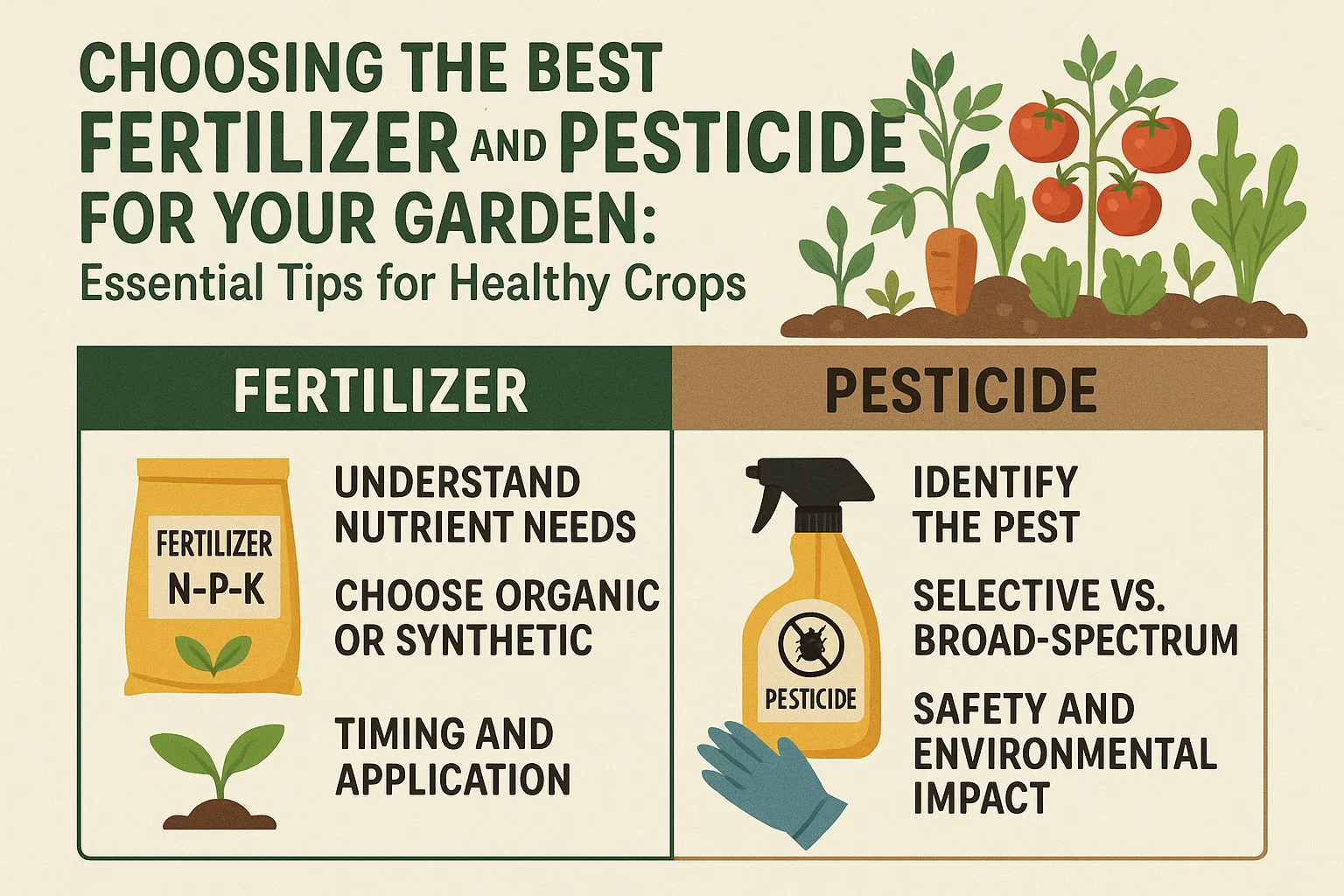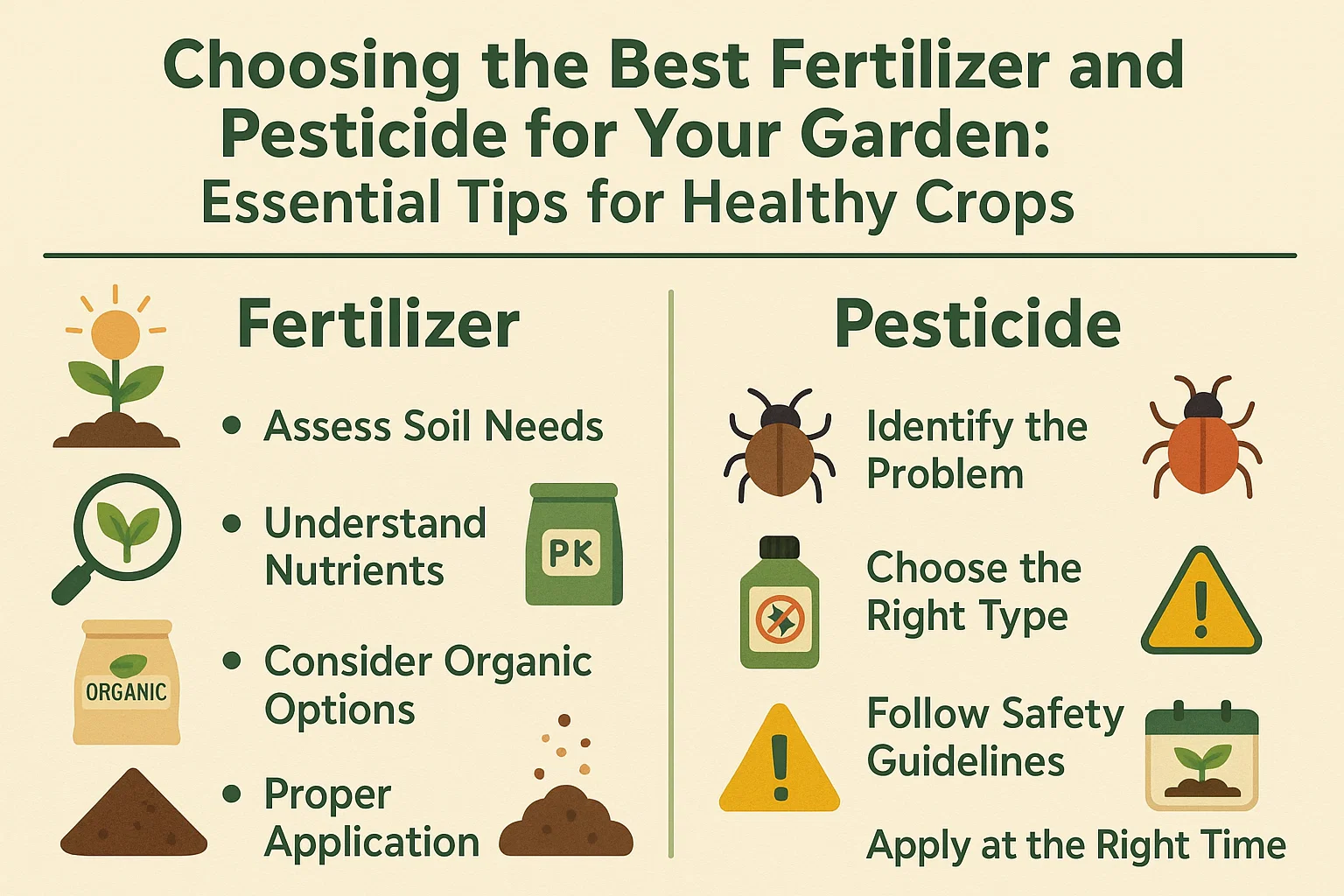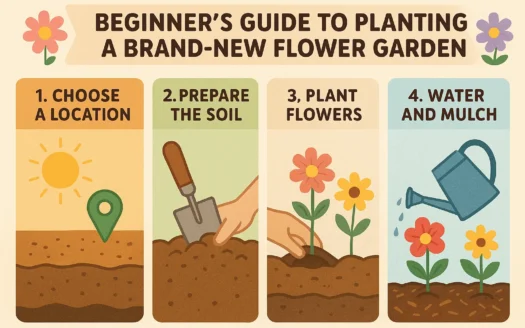Choosing the Best Fertilizer and Pesticide for Your Garden: Essential Tips for Healthy Crops

Choosing the Best Fertilizer and Pesticide for Your Garden: Essential Tips for Healthy Crops
Choosing the best fertilizer and pesticide for your garden is critical to the success of your crops. Especially in the case of vegetables and fruits, it’s important to select a fertilizer and pesticide that will benefit your plants without the risk of harsh chemicals harming your harvest.
Homeowners should keep in mind that healthy soil is a key ingredient to any successful garden. Fertilizer is meant to enhance the natural qualities and nutrients of your planting soil. Although many gardeners do not use fertilizer and achieve some type of growth, their gardens often do not grow to their greatest potential and may even experience an increased risk of disease and bug infestation.
Choosing a Fertilizer: Synthetic vs. Organic
The first choice that gardeners must make in selecting a fertilizer is whether to use synthetic or organic material. Organic, or natural fertilizers, are derived from living things or the nutrients of the Earth. This may include substances like:
- Mushroom manure
- Bone meal
- Blood meal
- Banana peels
- Crushed eggshells
- Kelp meal
- Seaweed
- Fish emulsion
- Cottonseed meal
- Poultry or horse manure
- Compost
Synthetic, or chemical fertilizers, are made of synthesized chemicals to deliver a stronger impact in a shorter period of time. These may include amounts of:
- Nitrogen
- Phosphorus
- Potassium
In general, synthetic fertilizers deliver a stronger dose with higher amounts of nutrients immediately, thus delivering quicker results. Natural fertilizers often have lesser amounts of nutrients, so they must be administered routinely over time to replenish the soil. While they take longer to feed the soil, organic fertilizers are often preferable for gardeners due to their long-term benefits.
Soil pH
If the soil pH is outside of an acceptable range, nutrients present in the soil cannot be absorbed by the plant. Certain conditions must be met, including a pH between 6.0 and 7.0. Gardeners may want to have the soil tested prior to a growing season to determine if adjustments are needed. The addition of compost is often a good way to regulate pH, but drastic swings are unhealthy for the soil.
N-P-K Ratio
Every fertilizer will have an N-P-K ratio printed on the packaging. These three numbers represent the available nutrients’ percentage by weight: nitrogen (N), phosphorus (P), and potassium (K). For example, a 100-lb. supply with an NPK ratio of 3-5-2 contains 3% nitrogen, 5% phosphorus, and 2% potassium. Most often, an all-purpose 5-5-5 fertilizer works well, but some gardeners may adjust the ratio based on specific soil deficiencies.
Fertilizer Methods
Water Soluble
Water-soluble fertilizers can liquify from a concentrated source (liquid or powder). They are fast-acting but require frequent reapplication due to their quick absorption and short-lasting effects.
Slow-Release Granules
These pellets release nutrients gradually over time, offering a long-term solution. They are applied less frequently but do not provide immediate benefits.
Worm Castings
Worm castings, an organic option, are nutrient-rich and odorless. They improve soil texture and promote healthy root growth.
Specialty Plant Food
Tailored synthetic formulas address specific nutritional needs for optimal plant growth, particularly useful for crops requiring targeted nutrient boosts.
Best Practices When Choosing a Pesticide
Selecting the right pesticide requires careful consideration of several factors:
Effectiveness in Eliminating Your Target Pest
Identify the pest accurately (e.g., insects, weeds, fungi) to choose the appropriate pesticide type (insecticide, herbicide, fungicide). Misidentification delays effective treatment.
Assurance Not to Affect Non-target Organisms
Ensure the pesticide targets only the pest and does not harm beneficial insects, plants, or water sources through runoff.
Solubility and Volatility
Solubility refers to a pesticide’s ability to dissolve in water, which can risk contaminating water supplies. Volatility (turning into gas) may require protective gear during application but reduces soil contamination.
Degradation into Non-toxic Material
Choose pesticides that break down into harmless substances quickly to minimize environmental impact.
Prevention of Resistance Development
Rotate pesticides or use integrated pest management strategies to avoid pests developing resistance.
Final Thoughts
Research your garden’s specific needs and consult local experts for tailored advice. With the right fertilizer and pesticide balance, your garden can thrive season after season, producing vibrant flowers and bountiful harvests.




